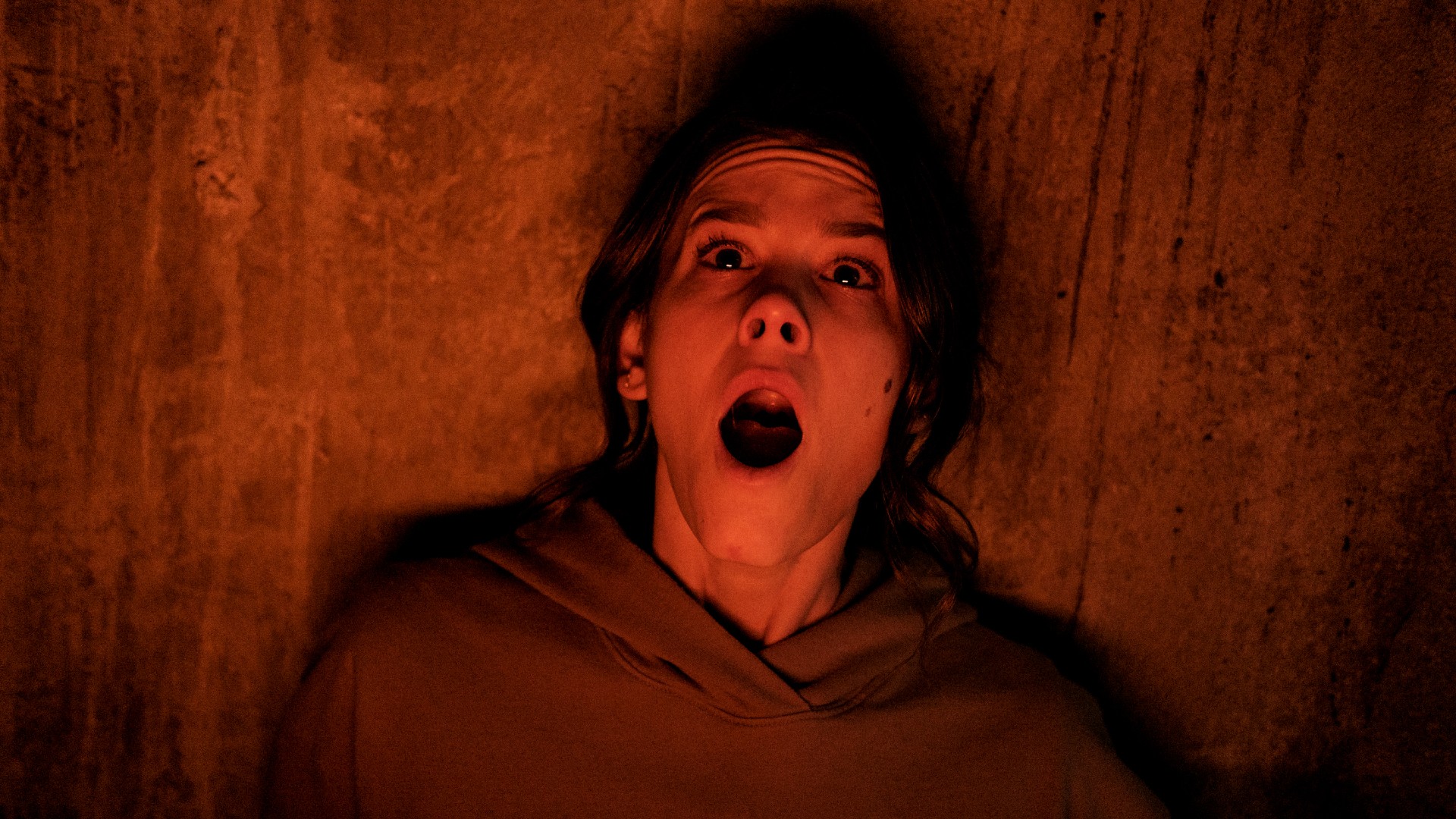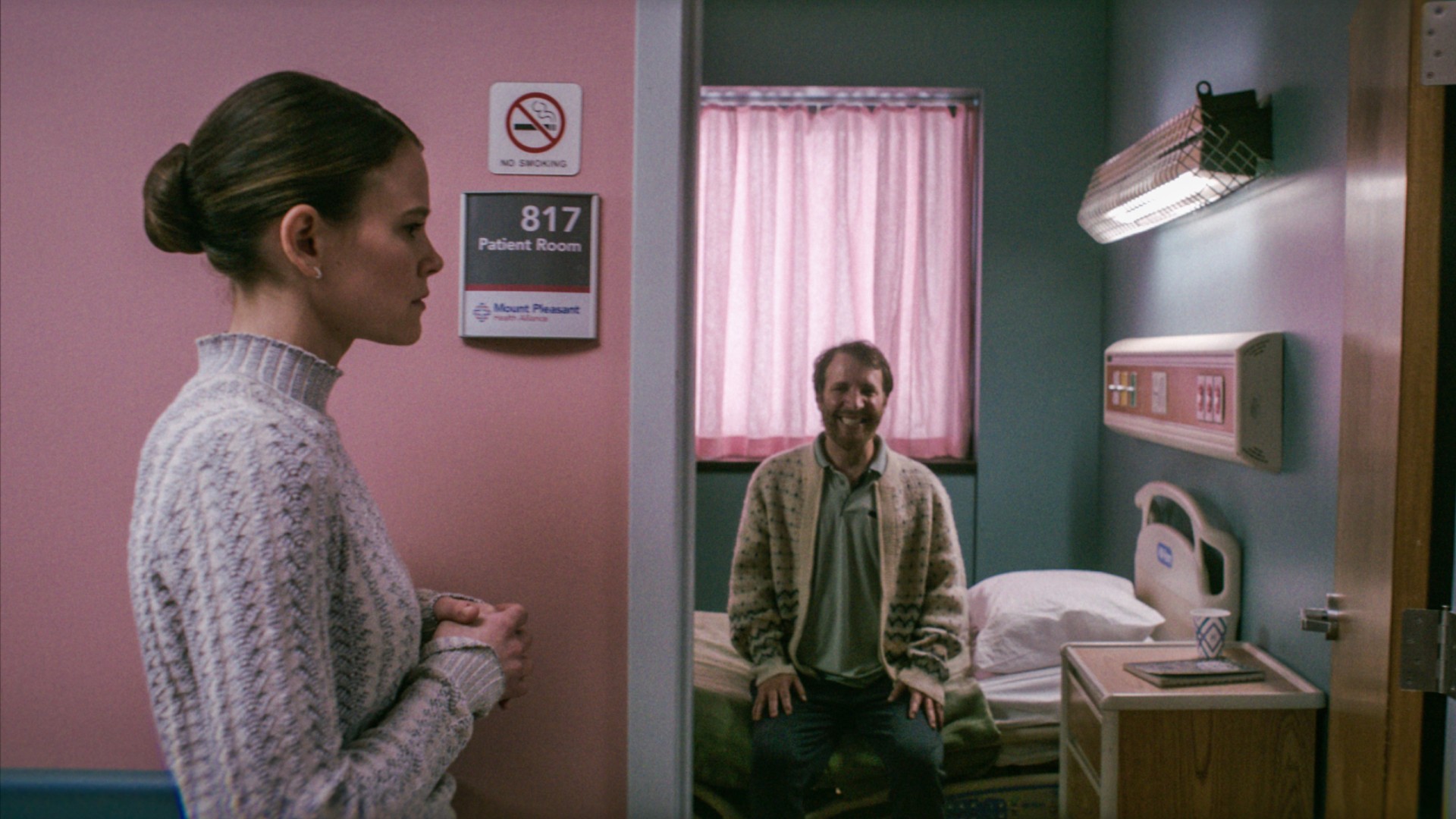The alarm has been tripped. The backdoor is wide open. And who or whatever’s impersonating the security-system operator on the other end of the phone line has just croaked three words that no horror movie character would ever want to hear: “Look behind you.” The command puts Rose (Sosie Bacon), the increasingly petrified heroine of Smile, between a rock and a hard place. She has to look, even if every fiber of her being would rather not. And so does the audience. We’re locked into her campfire crucible, forced to follow the hesitant backward tilt of her gaze, and the anticipatory creep of a camera that’s slow to reveal what that disembodied voice has invited her (and us) to discover.
Smile is full of moments like this. It’s a nasty, diabolically calibrated multiplex scream machine — the kind of movie that sends ripples of nervous laughter through packed theaters, the kind that marionettes the whole crowd into a synchronized dance routine of frazzled nerves and spilled popcorn. Turn up your nose, if you must, at the lowly cheap sting of a jump scare. Smile gives that maligned device a workout for the ages. It rattles with aplomb.
The first big shock arrives before the delayed opening credits, at the emergency psychiatric ward where Rose works as a therapist. A patient, quaking with fear, screams of being haunted by a malevolent force. And then the distraught woman seizures into a blankly beaming trance state, as if dosed with Joker toxin, and methodically cuts a gushing wound across her throat to match her ear-to-ear smile. It’s a horrible thing to witness, and Rose isn’t just shaken by the incident. She’s cursed by it, too, as her own life is slowly invaded by a ghoulishly grinning psychological phantom — an unholy aftershock of tragedy that only she can see, and which can take the form of people she knows and loves.

Genre buffs will now note that the premise echoes one of the great horror movies of the new millennium, David Robert Mitchell’s dreamily sinister suburban creepshow It Follows. (Here, again, are figures planted in the ominous distance, and stretches of unoccupied background space you begin to fear will soon be occupied.) That’s not the only corpse Smile scavenges. The film also picks from the bones of The Ring, the Elm Street movies, and Drag Me to Hell, and even disposable Blumhouse junk like Truth or Dare. Yet from these leftovers, it cobbles together a satisfying meal; scares that are this fiendishly effective are scarcely diminished by knowing what inspired them.
Expanding his acclaimed 11-minute short, Laura Hasn’t Slept, into a full first feature, writer-director Parker Finn establishes a prodigious talent for riding our nervous systems like a rollercoaster. He’s internalized and nearly mastered a lot of tricks of the trade: foreboding establishing shots that peer from a severe overhead vantage or turn the world on its seasick head; transitional cuts so hard and sharp they approximate someone lurching out of a nightmare. Smile has little mercy. It jolts with electrical precision. At the same time, Finn varies the tactics, knowing when to take less crude routes under our skin. There’s a birthday party scene that distorts the cheerful serenading into a spooky reverberating incantation, before unwrapping a very sadistic surprise. And the great character actor Rob Morgan drops by for a terrific one-scene cameo that proves how much simulated terror can goose the real kind; his raw emotion is insidiously infectious.

Plotwise, the whole thing’s rather stock. It has its clunky, obligatory elements, including a lopsided love triangle that just fills up space between superlative bursts of funhouse mayhem. And the story eventually shades into one of those amateur expository investigations horror heroines so often embark upon, as Rose traces back a string of suicides, uncovering what the audience will figure out a few reels earlier. Will it surprise anyone to learn that the real monster of this 2022 monster movie is trauma itself? In Smile, that cobwebbed conclusion moves from subtext to explicit text: The threat, rather literally, is PTSD as a transmissive hex, while the climax hinges very bluntly on confronting demons of a personal, childhood variety. Yet Finn hasn’t put the cart before the horse, as some highfalutin horror films from the past decade have. He’s made a mainstream fright flick too genuinely, unpretentiously scary to be confused for a therapeutic exercise.
Maybe too darkly funny, too. There’s a touch of midnight-black humor to a mental health professional stubbornly rationalizing her supernatural misfortune. Rose has, after all, been on the other side of such paranoia. What would she tell a patient seeing visions after a traumatic experience? Bacon, daughter of Kyra Sedgwick and Kevin Bacon, finds the drama and the comedy of this ordeal. Her Rose has an amusing habit of managing her mounting distress, tagging a sheepish “Sorry” onto the end of each freak-out.
Smile ends up drawing some grim conclusions. It’s “actually about trauma” in a rather unsparing way, with little interest in regurgitating comfortingly cathartic platitudes. One might even identify, in its apocalyptic haunted-house climax, a cruel rebuttal to the Babadook Recovery Plan. But if this studio shocker ultimately proves a bitter pill to swallow, it’s been sugarcoated in almost joyously energetic craft, the plain delight Finn takes in dousing us all in gallons of premium goosebump fuel. Horror fans, at least, will walk out with an exaggerated rictus of their own.
Smile opens in theaters everywhere Friday, September 30. For more of A.A. Dowd’s writing, please visit his Authory page.



